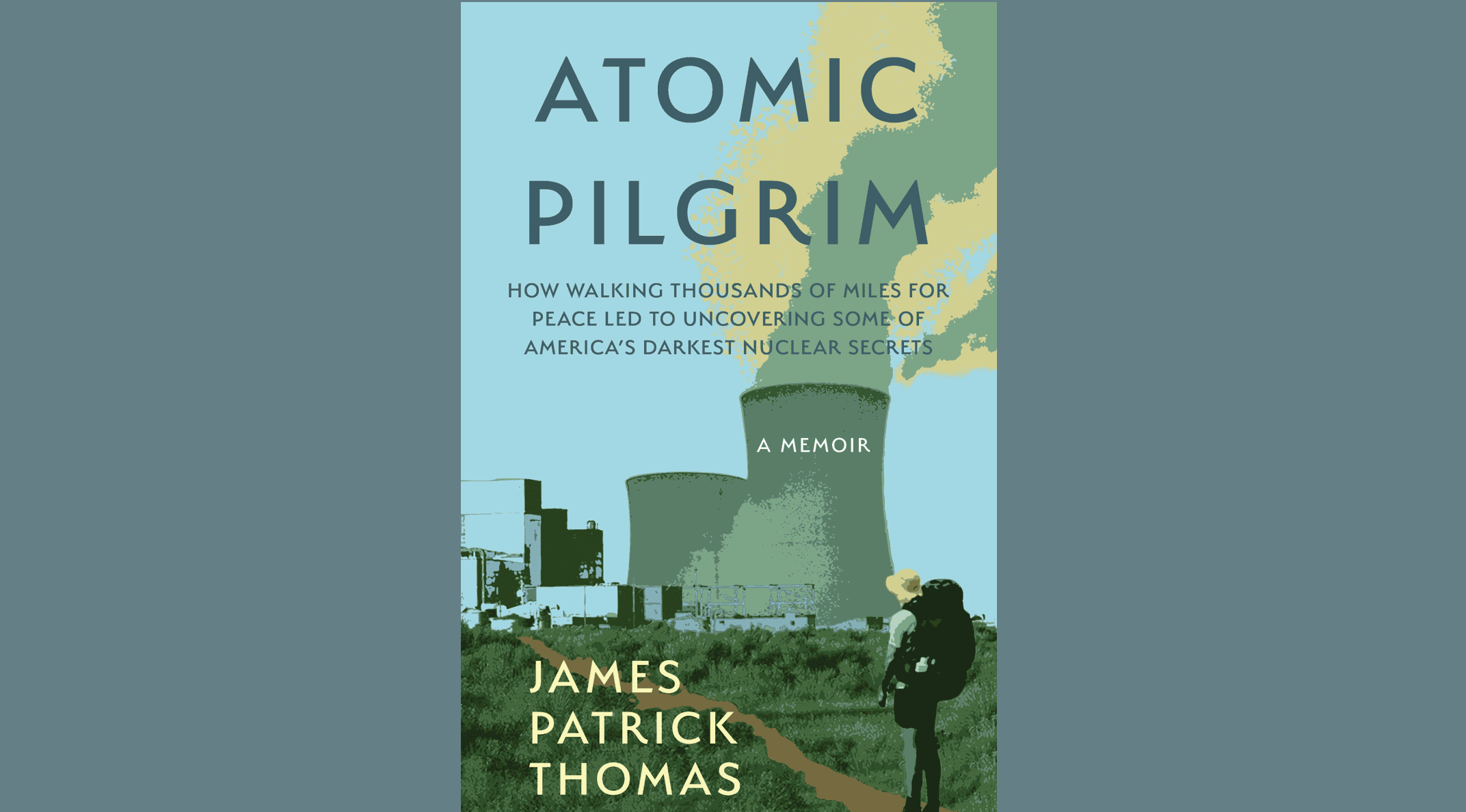In these days when it seems like we are constantly discussing how the world can come crashing down around us at any given moment for any one of a thousand equally terrifying reasons, we often forget about the ever-present danger of nuclear weapons. In Atomic Pilgrim: How Walking Thousands of Miles for Peace Led to Uncovering Some of America’s Darkest Nuclear Secrets, James Patrick Thomas seeks to remind us that, as Catholics, we are always invited, if not obligated, to take a stand against the ever-present and ever-growing danger posed by nuclear weapons.
The book is the memoir of one man’s experience of the great Christian journey of pilgrimage – both a physical pilgrimage and the internal one that endured beyond the physical one. In keeping with this focus on his experiences as a pilgrim, Thomas chooses to organize the book into two “trails”, which correspond to the two movements that he is focusing on: first, his experiences walking to the Holy Land and second, his time fighting for transparency regarding nuclear exposure in Washington State. Thomas spends the majority of the memoir recounting his experiences as a member of the Bethlehem Peace Pilgrimage, whose members walked from the Trident nuclear submarine base in Bangor, Washington to Bethlehem in the Holy Land. Setting out on Good Friday 1982, they walked 6,500 miles as a 20-month witness to peace, speaking out against the dangers posed by nuclear weapons and inviting people of all faith traditions to work together to preserve human life.
While the pilgrimage was clearly a grace-filled experience for Mr. Thomas, the book’s title is somewhat misleading, suggesting a documentary with elements of a spy thriller. In reality, Trail One, the trail of the pilgrims, reads as the story of a rather naive and idealistic young man. Full of passion for peace and the desire to be a part of a community, Thomas struggles as he realizes that no community is perfect and that we still bring all of our own individual baggage with us when we join. I would wager a guess that everyone reading this has been a part of some sort of community – be it a sports team in high school or college, a bar trivia team, or even a religious community. My experience has been that there is always the realization that your community is a place where everyone has just as many struggles and challenges as you do. In many ways, Mr. Thomas’s journey of first recognizing, and then accepting, that reality is the true fruit of his time on the road.
While he shares countless stories about the generosity of people in towns and cities across the United States and Europe, it is the interior growth that he and his fellow pilgrims experienced that comes across most clearly. If I am being completely honest, the naivety and American-centric consciousnesses of the pilgrims come to the fore in a shocking way. From the complexities of the north of Ireland during the height of the Troubles to the realities of individuals working for weapons manufacturers in the U.S., from the challenges of traveling within a Communist country to the raw hatred that he witnessed in the Middle East, there is always surprise expressed at what were, even at the time, well-known and easily knowable facts. Thomas and his companions were amazed at the love of bureaucracy and stamping paperwork by Communist governments and the fact that the U.S. military did not take kindly to people walking onto the location of nuclear missiles.
One can read the pilgrimage as an experience of trusting in the grace and providence of God because of this naivety, which some might find charming. Where the story became frustrating, for me, was when Mr. Thomas was describing the process of selecting the route to arrive at Bethlehem. After the options were presented and votes taken, there were numerous opportunities for people to speak in favor of a particular route before voting again. This process was repeated time after time, over a period of months in a variety of countries. There was so little movement in these “conversations” that the route was ultimately chosen by drawing lots. While certainly a method of selection that has biblical precedent, it is striking that individuals who composed the core decision-making group of pilgrims did not seem prepared for communal discernment.
After months on the road, with numerous challenges endured, both of the mundane and the extraordinary variety, the group still sought an egalitarian vision which their own experiences seemed to disprove. From the beginning, it was clear to me that they would need to choose between different routes for the final approach to Bethlehem and, rather than addressing the challenge in original planning, they waited until they were exhausted, burnt-out, and on edge in their own community. As a result, tensions and tempers flared that seemed to have been avoidable.
But God kept them close and they arrived in Bethlehem, having spoken to thousands of people in dozens of countries, all with the goal of winding the nuclear clock back from midnight. However, as Thomas himself points out numerous times, for all of the witness value of their journey, there was no concrete change or movement towards nuclear disarmament that occurred as a result of their actions. It is up to each individual reader to discern if concrete results are necessary to validate an action.
Beginning in 1984 Mr. Thomas then undertook Trail Two, his investigations into the effects of the Hanford Nuclear Reservation on Washington State’s Columbia River, near where he was raised. As a part of his investigations he learned that there had been numerous intentional releases of massive amounts of radiation that the federal government had never notified the people living in the contamination zones about, and as a result there were numerous people suffering from the effects of excess radiation, especially in the form of cancer. Through various Freedom of Information Act requests, Thomas sought to hold the government responsible for the harm that they had caused. Here we walk with Thomas on the flip side of his experiences – still fighting against what he saw as the greatest existential threat facing humanity, but now he shared his pilgrimage site was the local public library.
Trail Two is much more in the traditional “memoir” model. Overall, is this book the dramatic experience that its title might suggest? Not exactly. Is it the story of a young man, with all of the naivety and idealism of youth, who sought to grow ever more fully into the loving and generous man who God created him to be, all too often in spite of himself? Yes. I would recommend it to anyone who wants to get a sense of what living in community can be like, those who want to know more about the group Pax Christi, and anyone interested in Catholic efforts towards nuclear disarmament. Although not delivering the docu-thriller suspense that the title suggests, Thomas’s story is a compelling reminder that Christian discipleship demands action – even when the world dismisses it.
-//-
Atomic Pilgrim is available for pre-order from Latah Books. Cover image used with permission of publisher.


